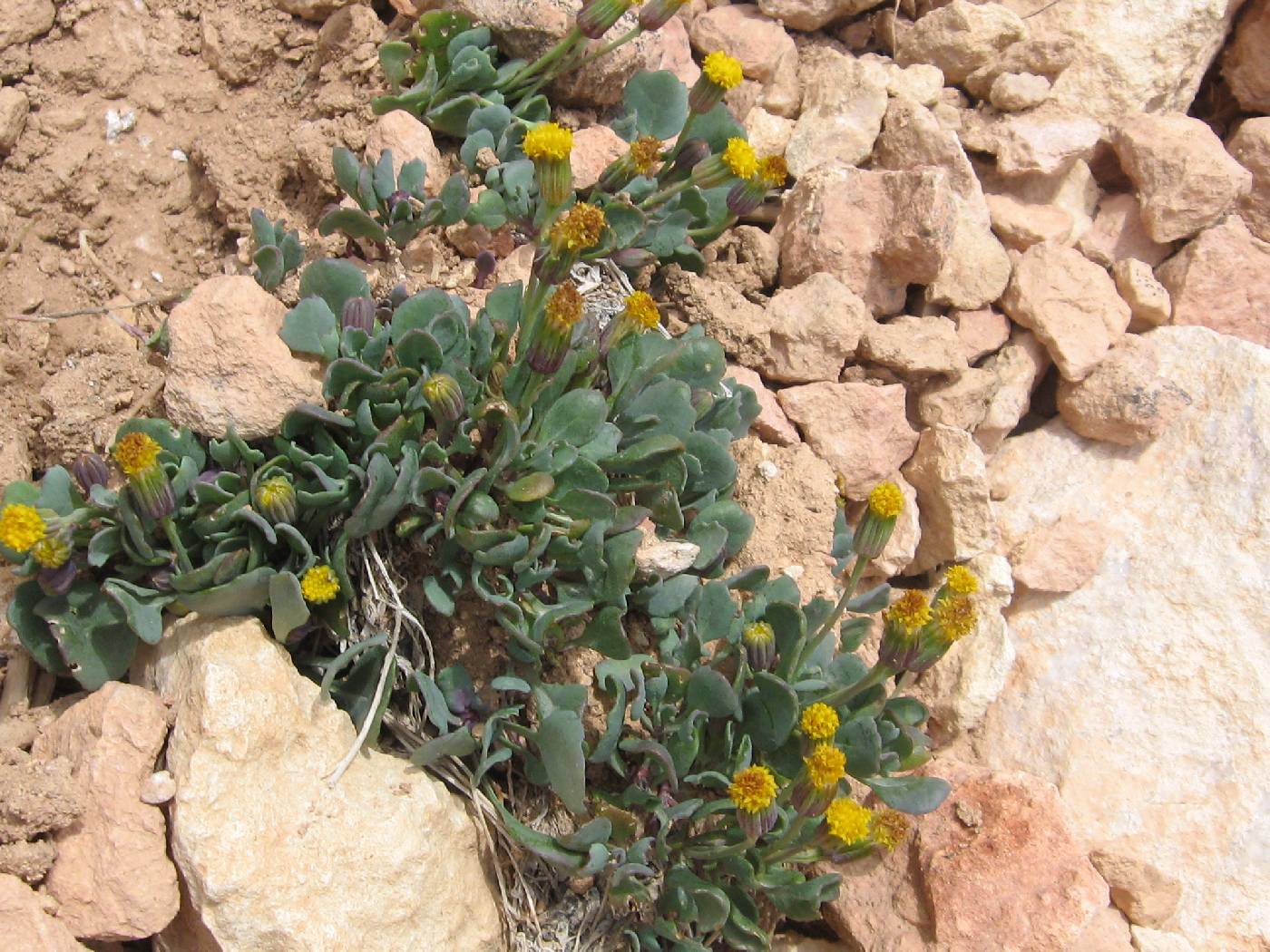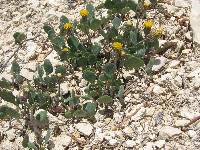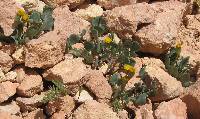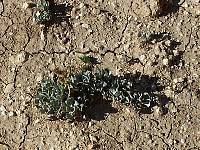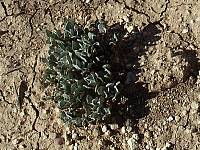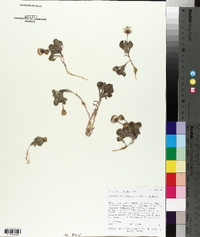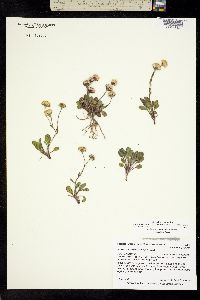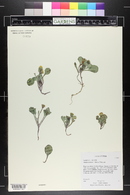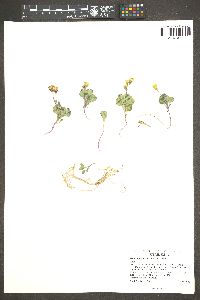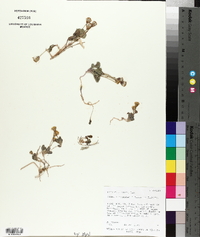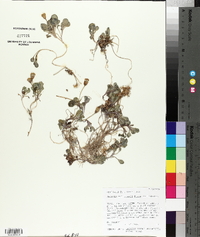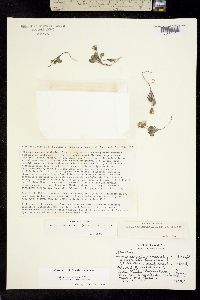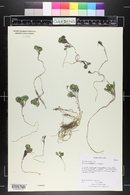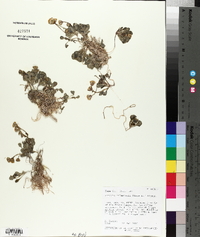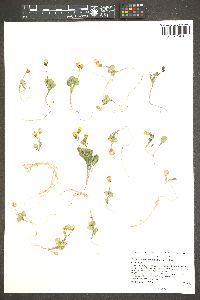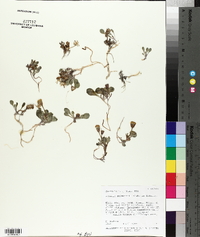
|
|
|
|
Family: Asteraceae
Podunk Groundsel
[Senecio malmstenii S.F. Blake ex Tidestr.] |
Perennials, 8-15+ cm; rhizomatous (rhizomes relatively slender, branched). Stems 1 or 3-5, loosely clustered, glabrous or bases and leaf axils tomentose. Basal leaves (and proximal cauline, relatively thick and turgid) petiolate (petioles sometimes winged); blades elliptic-ovate or suborbiculate to spatulate, 15-25 × 5-20 mm, bases tapering, margins entire or dentate (at apices). Cauline leaves abruptly reduced (becoming sessile, bractlike). Heads 1-2(-4). Peduncles ebracteate, glabrous. Calyculi inconspicuous. Phyllaries 13, cyanic, 8-9 mm, glabrous or loosely tomentose proximally. Ray florets (0) or 8-13; corolla laminae 7-9 mm. Disc florets 35-50+; corolla tubes 2-3 mm, limbs 2.5-3.5 mm. Cypselae 1-2 mm, glabrous; pappi 3-4.5 mm. Flowering mid Jul-early Aug. Steep talus of limestone-derived slopes at or above timberline; of conservation concern; 2600-3600 m; Idaho, Nev., Utah. Packera malmstenii is poorly known; it has obvious affinities with P. werneriifolia in both morphology and habitat preference. Its herbage tends to be thick and turgid.
Non-technical Description: Podunk groundsel is a glabrous perennial forb from slender, long-branched rhizomes. Leaves are essentially all basal with thick, roundish leaf blades 1-3 cm long and entire to few-toothed margins. Flowering stems are 4.5-7 cm tall and topped by one or two rayless flower heads. Involucres are 8-10 mm high with 13 purplish bracts enclosing numerous yellow to orangish disk flowers. Fruits are glabrous achenes with a white pappus of smooth bristles. Flowering from July-August. (Cronquist 1994, Fertig & Reynolds 2009, Welsh et al. 2008). Similar Species: Musinea groundsel (Senecio musiniensis) and Beaver Mountain groundsel (S. castoreus) are grayish to white woolly pubescent. Habitat: Podunk groundsel occurs primarily on steep, south-facing slopes of the Red Member of the Claron Formation below the rim of the amphitheater. Populations are often found associated with shallow erosional channels or rills that run parallel to the slope axis and expose bare, clayey soil. This species is usually found in sparsely vegetated cushion plant communities domintated by Eriogonum panguicense var. alpestre, Cymopterus minimus, Senecio atratus, Haplopappus zionis, Silene petersonii, Calamagrostis scopulorum, or Monardella odoratissima . Vegetative cover is typically less than 10%, while that of small rock fragments covering the hard clayey soil may exceed 50%. Elevation ranges from 2875-3200m (9430-10500ft)(Fertig & Reynolds 2009). References: Cronquist, A. 1994. Volume 5, Asterales. In: Cronquist, A., A.H. Holmgren, N.H. Holmgren, J.L. Reveal, and P.K. Holmgren, eds. Intermountain Flora, Vascular Plants of the Intermountain West, U.S.A. New York Botanical Garden, Bronx, NY. 496 pp. Fertig, W. and D. N. Reynolds. 2009. Survey of rare plants of Cedar Breaks National Monument: Final Report. Welsh, S.L., N.D. Atwood, S. Goodrich, and L.C. Higgins. 2008. A Utah Flora, 2004-2008 summary monograph, fourth edition, revised. Brigham Young University, Provo, UT. 1019 pp. Author: Walter Fertig, Moenave Botanical Consulting, Kanab, UT. April 2017 |

